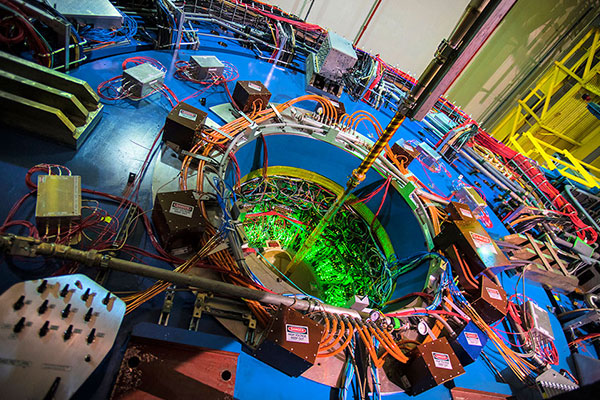The “off” signal shows up as a sign change (from negative to positive) in data that describe “higher order” characteristics of the distribution of protons produced in these collisions. “This sign change is a robust indication, supported by first-principles calculations, that the formation of a quark-gluon plasma is turned off at RHIC’s lowest collision energy,” said Nu Xu, a senior scientist in Berkeley Lab’s Nuclear Science Division (NSD) and co-author on the study. Their findings, just published in Physical Review Letters, will help physicists map out the conditions of temperature and density under which the exotic matter, known as a quark-gluon plasma (QGP), can exist and identify key features of the phases of nuclear matter.
Learn More
Clear Sign that QGP Production ‘Turns Off’ at Low Energy
Higher order statistical analysis of protons emitted from wide range of gold-gold collision energies shows clear absence of a quark-gluon plasma (QGP) at the lowest energy
February 24, 2023 / Brookhaven National Laboratory Newsroom
Beam Energy Dependence of Fifth- and Sixth-Order Net-Proton Number Fluctuations in Au + Au Collisions at RHIC
February 24, 2023 / B. E. Aboona et al. (STAR Collaboration) / Physical Review Letters
